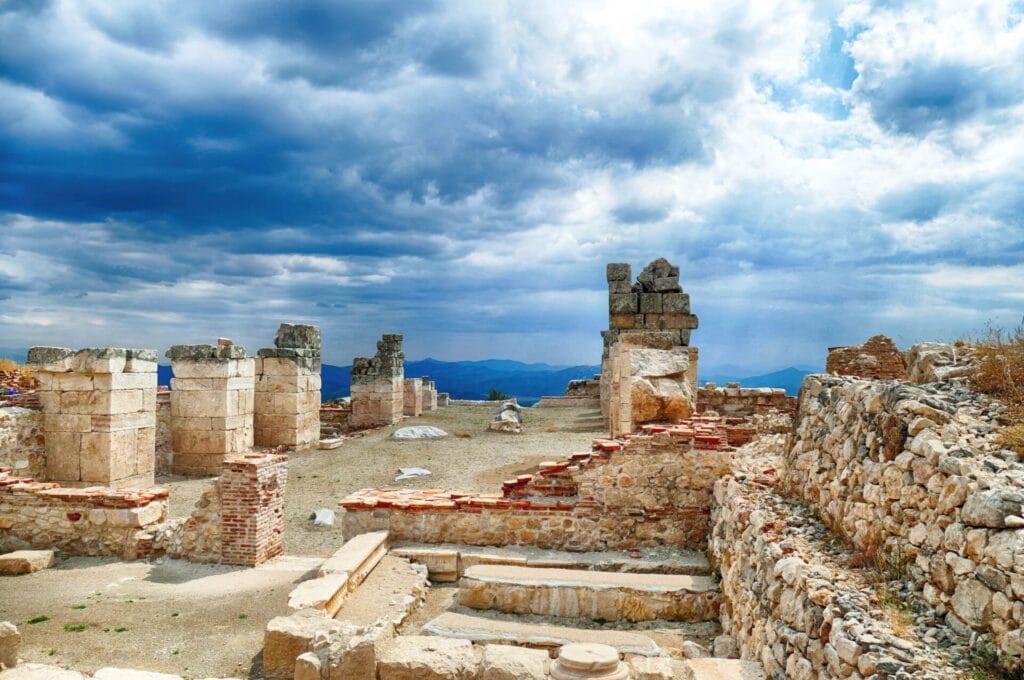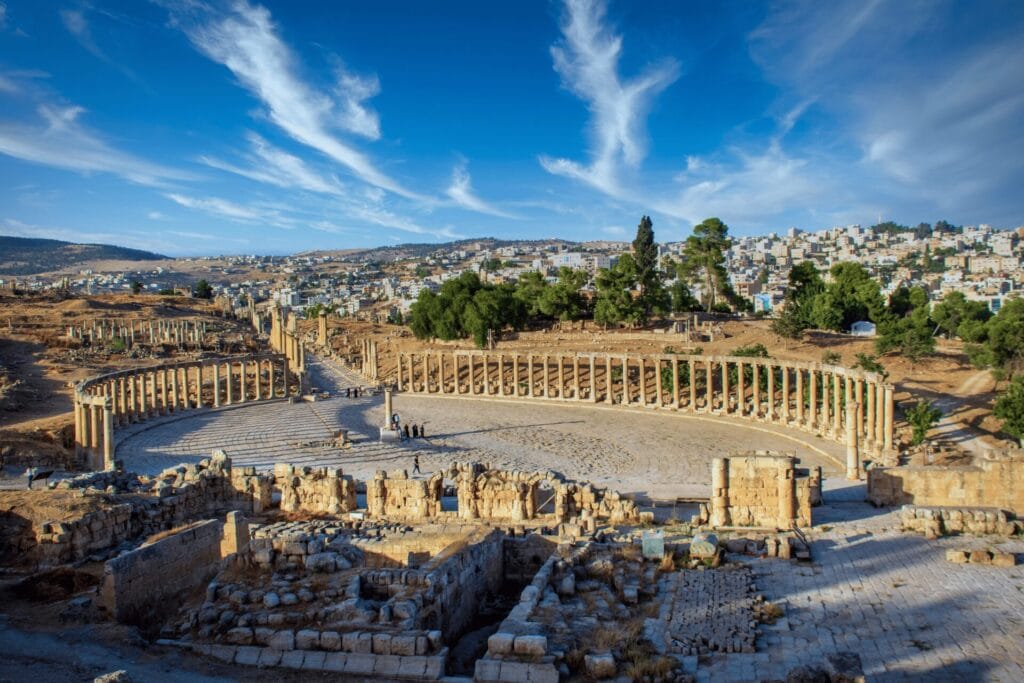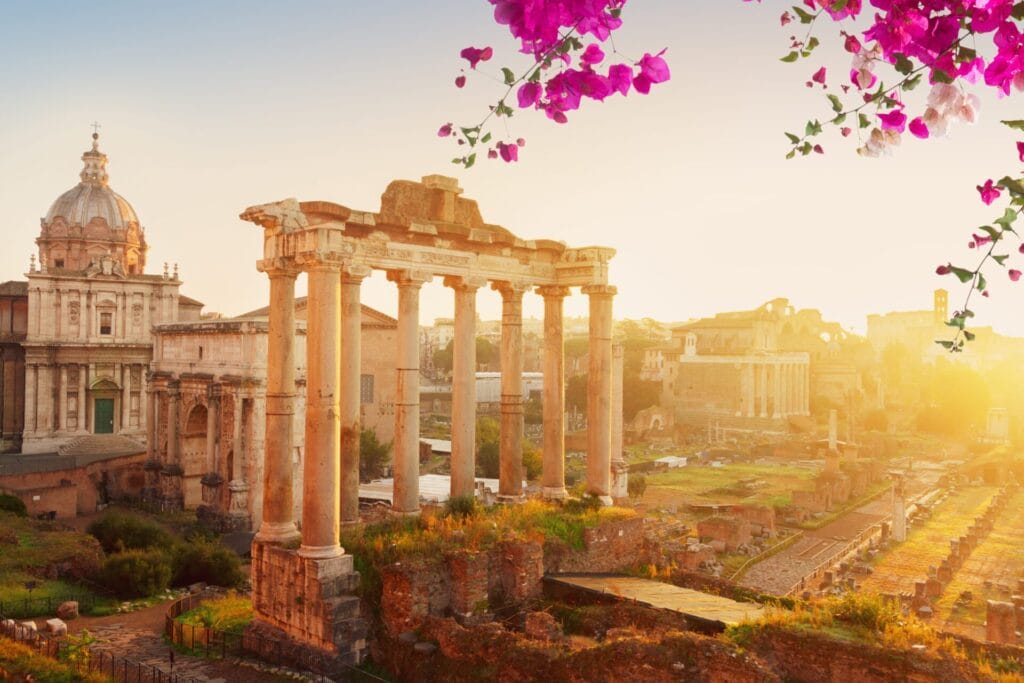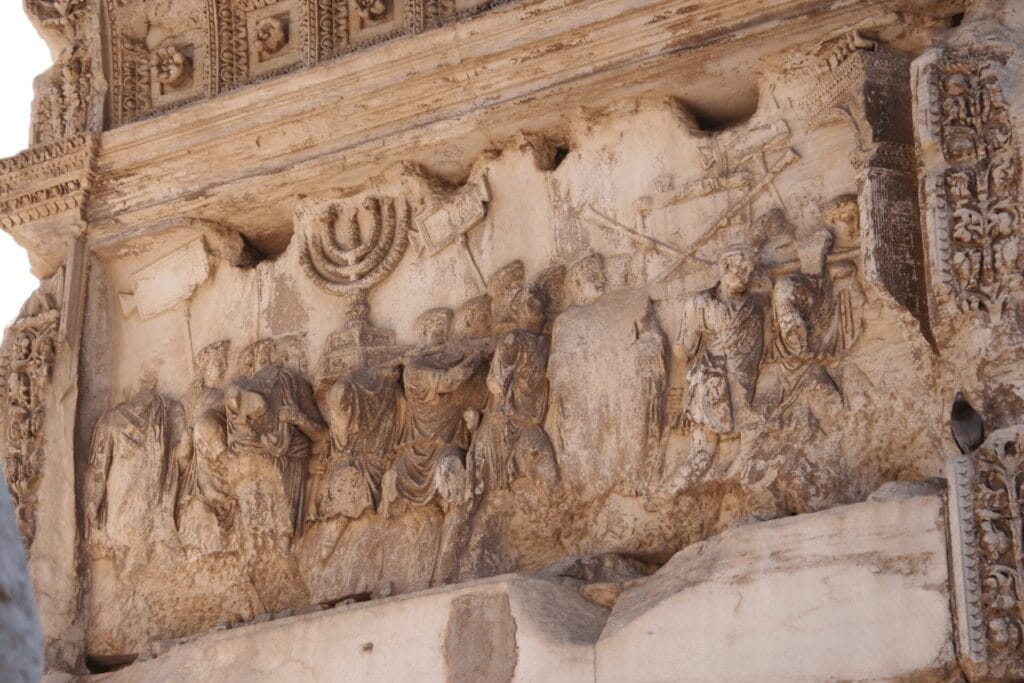The evolution of Roman architecture: from temples to triumphal arches is not just a tale of bricks and mortar; it is a profound narrative that encapsulates the aspirations, beliefs, and innovations of one of history’s most influential civilizations. Have you ever gazed upon the grandeur of the Colosseum or marveled at the iconic Pantheon and wondered how such monumental structures came to be? This journey through time begins with the simple yet sacred temples that dotted the Italian landscape, evolving into the grand triumphal arches celebrating military victories and political power. Each architectural advancement reflects the Romans’ mastery of engineering and their cultural priorities, revealing a dynamic relationship between architecture and society. Join us as we explore this fascinating transformation that shaped not only ancient Rome but also the future of architecture itself.
Understanding the Foundations of Roman Architecture
The evolution of Roman architecture: from temples to triumphal arches is rooted in a rich history that showcases the ingenuity of the Romans. To fully appreciate this architectural journey, it’s essential to examine the foundational elements that shaped their design principles.
The Origins of Roman Architecture
Roman architecture began as a reflection of earlier influences, most notably from the Etruscans and the Greeks. These early civilizations laid the groundwork for what would become a distinctive Roman style. Key characteristics of this style include:
Symmetry and Proportion: Romans adopted Greek proportions but adapted them to suit their tastes.
Use of Arches and Vaults: Innovations in structural engineering allowed for the creation of larger and more durable buildings.
Incorporation of Concrete: The development of concrete revolutionized construction techniques, enabling the Romans to build structures of unprecedented scale.
Key Materials Used in Construction
The Romans utilized a variety of materials that contributed to their architectural evolution:
Travertine: A volcanic stone, often used for constructing monuments and temples.
Brick: Commonly used in residential and military architecture.
Concrete: Allowed for flexibility in design and significantly decreased building time.
By blending these materials with advanced engineering methods, the Romans were able to construct some of the most iconic structures in history.
Influences from Etruscans and Greeks
The Etruscans influenced Roman temple design, particularly through their use of columns and interior space. The Romans later adapted these features, resulting in a unique blend that characterized their sacred spaces.
Greek Temples: Known for their grandeur and detailed columns—the Doric, Ionic, and Corinthian orders.
Etruscan Influences: Focused on functionality and simplicity in their structures, paving the way for the Romans to prioritize both aesthetics and utility.
For those interested in a deeper dive into the architectural practices of ancient civilizations, resources such as National Geographic provide extensive articles and insights.
The foundations of Roman architecture are crucial in understanding its evolution. By examining the materials, techniques, and influences that shaped their buildings, we can appreciate how the Romans transitioned from constructing temples to monumental triumphal arches. This transformation not only highlights their architectural prowess but also reflects their cultural and political aspirations.
Temples: The Sacred Spaces
As part of the evolution of Roman architecture: from temples to triumphal arches, temples played a pivotal role in shaping not only the physical landscape of Rome but also its spiritual and cultural identity. Roman temples were primarily dedicated to deities and were places of worship that showcased the architectural innovation of the era.

Design Features of Roman Temples
Roman temples were characteristically distinct, combining elements of Greek designs with their unique adaptations. Key design features included:
Raised Platforms: Temples were often elevated on a podium to signify importance and enhance visibility.
Columns and Porticos: They utilized impressive columns, frequently adopting the Corinthian order for its ornate detail.
Beam and Truss Roofs: This enables larger open spaces inside, emphasizing the grandeur of the worship experience.
Notable Examples and Their Significance
Several temples stand out as exemplars of Roman architectural excellence:
Pantheon: Known for its massive dome and oculus, the Pantheon symbolizes the integration of spirituality and engineering prowess.
Temple of Jupiter Optimus Maximus: Located on the Capitoline Hill, this temple was central to Roman religious life and showcases the power of the state religion.
Temple of Vesta: Its circular design and eternal flame represented the heart of Roman domestic life and community.
Religious Practices and Temple Functions
Roman temples were not only places of worship but also served various community functions:
Public Gatherings: They often hosted civic events and religious festivals, reinforcing community ties.
Economic Activities: Temples housed treasuries, and villagers would often engage in commerce in their vicinity.
Cultural Identity: They represented the might of Rome and were vital in the Roman Empire’s efforts to unify diverse cultures under one banner.
For more information on the architectural marvels of ancient Rome, the Smithsonian Institution offers valuable resources and insights into Roman architecture and its legacy.
Temples are foundational to understanding the evolution of Roman architecture, serving as both sacred spaces and cultural hubs. Their intricate designs and significant societal roles laid the groundwork for the architectural advancements that would follow, such as the construction of triumphal arches. By appreciating the complexity and beauty of these temples, we gain a deeper understanding of Roman society and its architectural heritage.
The Transition: From Temples to Public Spaces
As we explore the evolution of Roman architecture: from temples to triumphal arches, we recognize that this evolution wasn’t merely about transitioning from sacred to secular buildings. It symbolized a profound shift in Roman society and its values, moving towards a more communal and civic-centric environment.

Shift in Architectural Focus During the Republic
During the Roman Republic, architectural priorities began to diversify, reflecting the changing needs of society. Significant developments include:
Civic Buildings: The emergence of basilicas, which served as public meeting halls and legal courts.
Forums: Central marketplaces that became the heart of social and political life in Roman cities.
Theatres and Amphitheatres: Structures built for entertainment purposes, which facilitated public gatherings and cultural events.
The Rise of Civic Buildings and Their Roles
Civic buildings became vital symbols of Roman governance and community identity. Key advantages included:
Promoting Civic Engagement: By providing spaces for public discourse and decision-making, these structures encouraged citizen participation.
Cultural Hub: They hosted festivals, games, and public ceremonies, strengthening community bonds.
Architectural Innovation: New construction techniques and styles flourished, emphasizing design and functionality.
Importance of Infrastructure in Urban Planning
With the transition from temples to civic-focused architecture, Roman urban planning became increasingly sophisticated. Key aspects included:
Roads and Aqueducts: These infrastructural innovations facilitated trade and communication while enhancing the quality of urban life.
Public Baths: Serving both social and hygiene purposes, these structures became integral to daily Roman life.
Commemorative Monuments: The increasing number of statues and columns marked significant historical events and celebrated military victories.
For in-depth exploration of Roman urban planning, the Getty Museum offers resources that delve into ancient city designs and their significance.
The transition from temples to public spaces marks a pivotal moment in the evolution of Roman architecture. As society moved toward civic engagement and communal identity, the emergence of new architectural forms highlighted the Republic’s evolving priorities. This shift not only improved urban life but also laid the groundwork for the grand triumphal arches that would soon commemorate Rome’s greatest achievements.
The Emergence of the Arch
As we delve deeper into the evolution of Roman architecture: from temples to triumphal arches, one of the most significant innovations was the introduction and widespread use of the arch. This architectural advancement fundamentally changed not only the design of buildings but also the engineering capabilities of the Roman Empire.

The Technical Innovation of the Arch
The arch was a groundbreaking development that allowed Romans to construct larger and more resilient structures. Key factors that contributed to its adoption include:
Weight Distribution: The arch effectively distributes weight, allowing for wider spans without compromising stability.
Versatility in Design: Arches could easily be integrated into various architectural forms, from aqueducts to monumental buildings.
Durability: Structures built with arches tended to withstand the test of time better than their predecessors.
How Arches Transformed Roman Structures
The use of the arch led to significant advancements in various building projects:
Aqueducts: These structures were essential for transporting water across long distances, leveraging the arch’s strength to cross valleys.
Bridges: Roman engineers designed bridges that utilized multiple arches, enhancing the ability to navigate rivers and difficult terrains.
Coliseums: The iconic Roman amphitheaters, such as the Colosseum, showcased the power of arches in supporting massive structures for public entertainment.
The Relationship Between Arches and Aqueducts
Aqueducts stand out as one of the most impressive examples of arch usage:
Engineering Marvels: Many aqueducts featured multiple arches, allowing them to traverse varying landscapes while maintaining a consistent water flow.
Public Health Improvements: By ensuring a reliable water supply, aqueducts significantly improved public health and sanitation in urban areas.
Arch as Symbol: These structures became symbols of Roman engineering prowess and integrated functionality with aesthetic appeal.
For a deeper exploration of Roman engineering, the British Museum provides resources and exhibits illustrating the significance of arches and aqueducts in ancient Rome.
The emergence of the arch represents a pivotal moment in the evolution of Roman architecture. It not only facilitated the construction of lasting structures but also laid the groundwork for iconic designs such as triumphal arches. By embracing this innovative architectural element, the Romans transformed their cities and infrastructure, setting new standards in engineering that continue to influence architecture today.
Triumphal Arches: Celebrating Victories
As we trace the evolution of Roman architecture: from temples to triumphal arches, it’s essential to recognize the significant role triumphal arches played in both commemorating military victories and showcasing Roman ingenuity. These monumental structures became iconic symbols of power and prestige within the vast empire.

The Purpose and Symbolism of Triumphal Arches
Triumphal arches served a variety of functions and carried deep meanings:
Commemoration: They honored victorious generals and significant military achievements, ensuring that the glory of these events would be remembered.
Political Propaganda: Emperors used the arches to promote themselves and their conquests, reinforcing their authority and connection to the divine.
Public Celebrations: Arches often served as focal points for public celebrations, enhancing community pride.
Famous Examples of Triumphal Arches
Several triumphal arches stand out in history, showcasing elaborate designs and rich symbolism:
Arch of Titus: Constructed in 81 AD, this arch commemorates the victory over Jerusalem and features detailed reliefs that depict the spoils of war.
Arch of Constantine: Erected in 315 AD, it celebrates Constantine’s victory at the Battle of Milvian Bridge and integrates artistic styles from earlier periods, highlighting cultural continuity.
Arch of Septimius Severus: Built in 203 AD in the Roman Forum, this arch honors Emperor Septimius Severus and his sons, illustrating military triumphs through intricate carvings.
Architectural Features and Artistic Storytelling
Triumphal arches were not just functional; they were artistic masterpieces. Key features included:
Elaborate Reliefs: These carvings depicted scenes from battles, processions, and key accomplishments, acting as historical narratives in stone.
Inscription Panels: Many arches featured Latin inscriptions that commemorated specific events, leaving a lasting legacy of the emperor’s deeds.
Corinthian Columns: The use of columns added grandeur and elegance, reinforcing the significance of the structure.
For further exploration of Roman triumphal arches and their architectural significance, the Metropolitan Museum of Art offers extensive resources on Roman art and architecture.
Triumphal arches exemplify the zenith of Roman architectural achievement and are a testament to the evolution of Roman architecture. As symbols of victory and power, they link the monumental past of temples to the ambitious aspirations of an expanding empire. Understanding their role helps us appreciate not only the artistry involved but also the cultural and political narratives they convey.
The Influence of Roman Architecture on Future Generations
As we examine the evolution of Roman architecture: from temples to triumphal arches, it becomes clear that this architectural journey has significantly influenced the design principles of subsequent generations. Roman innovations laid the groundwork for various architectural movements that continue to resonate throughout history.

How Roman Design Principles Shaped Renaissance and Neoclassical Architecture
The Renaissance period saw a revival of interest in classical antiquity, with Roman architecture serving as a foundational influence:
Reintroduction of Classical Orders: Architects like Andrea Palladio adopted and adapted the Roman orders (Doric, Ionic, Corinthian) in their designs.
Proportion and Symmetry: The emphasis on balanced proportions found in Roman structures inspired the aesthetic principles of Renaissance architecture.
Use of Arches and Domes: The innovative use of arches and domes in Roman buildings, such as the Pantheon, inspired new masterpieces like St. Peter’s Basilica.
Lasting Effects on Modern Architecture
The legacy of Roman architecture is visible in various modern architectural styles and practices:
Government Buildings: Many civic structures, including courthouses and capitol buildings, mimic the grandeur of Roman temples and triumphal arches.
Public Monuments: Modern memorials often draw inspiration from Roman designs, emphasizing monumental scale and symbolic representation.
Urban Planning: The Roman approach to urban layout—emphasizing forums, public spaces, and efficient transportation networks—continues to inform contemporary city planning.
Preservation of Roman Architectural Heritage
Preserving Roman structures and their influences is crucial for understanding the past and its lessons for the future:
Restoration Projects: Organizations and governments are dedicated to the preservation of Roman sites, maintaining their historical integrity for future generations.
Education and Research: Institutions like The Archaeological Institute of America focus on archaeological research, educating the public about the importance of Roman architecture in shaping modern society.
Cultural Appreciation: By studying Roman architectural heritage, we promote awareness of cultural diversity and innovation that characterized ancient civilizations.
Conclusion
The influence of Roman architecture extends far beyond its historical context, affecting a myriad of architectural styles and urban planning approaches. From the temples that housed spiritual devotion to the monumental triumphal arches that celebrated victories, the evolution of Roman architecture illustrates a rich tapestry of cultural and technical achievements that continue to inspire and inform modern design.
As we reflect on the evolution of Roman architecture: from temples to triumphal arches, it becomes evident that this architectural journey encapsulates the cultural, political, and technological advances of ancient Rome. The transformation of structures over time reveals not only the aesthetic preferences of the Romans but also their ambitions and societal shifts.
Summary of Key Developments
The progression from sacred spaces to monumental arches is marked by significant developments:
Innovative Materials: The Romans’ mastery of concrete and stone allowed for the creation of lasting structures that have withstood the test of time.
Architectural Techniques: The introduction of the arch and vault revolutionized Roman architecture, enabling larger and more sophisticated edifices.
Cultural Significance: Temples served as centers of worship and community, while triumphal arches celebrated victories and the might of the empire, reflecting changing societal values.
Reflections on the Importance of These Structures
Cultural Identity: Roman architecture is a reflection of the empire’s identity, showcasing its values, religious beliefs, and artistic expressions.
Engineering Feats: The advances made in architectural design and construction techniques paved the way for future innovations in the field.
Historical Understanding: Exploring architectural developments allows us to understand the broader context of Roman history and its impact on modern society.
Encouragement to Explore Roman Architecture Further
For those captivated by the stories and structures of ancient Rome, numerous resources are available to deepen your understanding:
Visit Historical Sites: Exploring preserved ruins and temples provides a firsthand experience of Roman architectural grandeur.
Engage with Educational Resources: Websites such as History.com offer articles, videos, and documentaries that delve into Roman history and architecture.
Participate in Archaeological Studies: Engaging with ongoing research projects helps preserve the legacy of Roman architecture while fostering a deeper appreciation of its historical significance.
The evolution of Roman architecture is an enduring legacy that informs our architectural practices, cultural narratives, and urban landscapes today. By understanding the past, we can appreciate the intricacies and innovations that have shaped our world.
What are the key features of Roman temples?
Roman temples were characterized by their elevated platforms, grand columns, and intricate pediments. They often employed a combination of the Greek orders—Doric, Ionic, and Corinthian—to achieve aesthetic appeal while integrating symbolic elements that represented their deities. The use of high ceilings and sanctuaries for worship made these spaces both functional and sacred.
How did the arch influence Roman architecture?
The arch revolutionized Roman architecture by allowing architects to build larger and more durable structures. Its design effectively distributed weight, enabling the construction of expansive halls, bridges, and aqueducts. This innovation not only improved the stability of buildings but also became a defining element of Roman engineering and design.
What is the purpose of triumphal arches?
Triumphal arches served as monumental gateways that commemorated military victories and celebrated the achievements of emperors. These structures were adorned with detailed reliefs and inscriptions that depicted significant events and honored victorious generals, reinforcing both political power and public pride in the Roman Empire.
How did Roman architecture influence later architectural styles?
Roman architecture laid the groundwork for several subsequent styles, particularly during the Renaissance and Neoclassical periods. Architects drew inspiration from Roman design principles, such as symmetry, proportion, and the use of classical orders, adapting these elements in buildings that conveyed authority and beauty throughout Western history.
Where can I learn more about Roman architecture?
To learn more about Roman architecture, many reputable sources offer extensive resources. Museums like the Metropolitan Museum of Art and the British Museum provide insights into the architectural achievements of ancient Rome through exhibits and educational programs. Additionally, websites like History.com and National Geographic feature articles that explore various aspects of Roman culture and its lasting impact on architecture.

